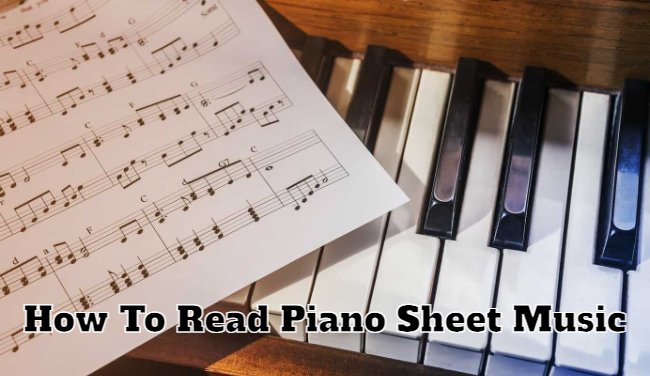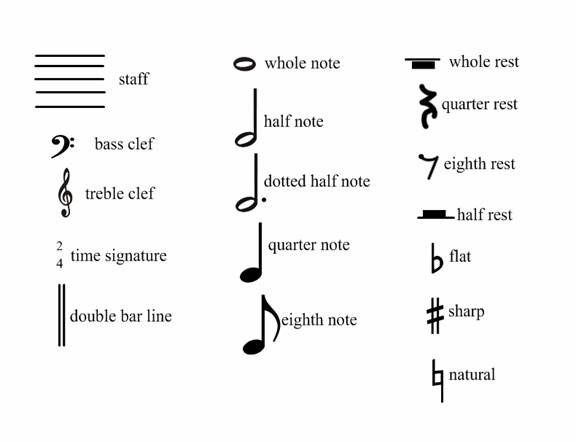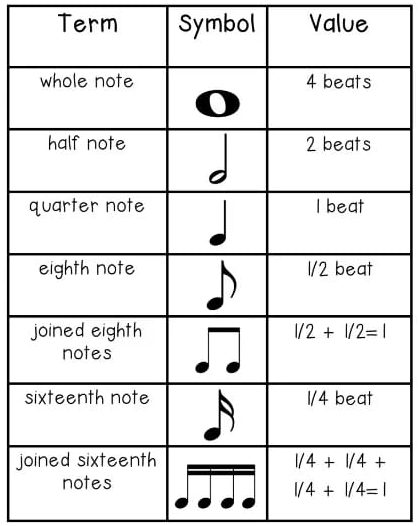Do you want to learn how to read piano sheet music? If yes, then this is for you. Playing the piano can be a fulfilling and entertaining experience. Whether you are a beginner or an advanced player, learning how to read piano sheet music is a crucial skill to have. Reading piano sheet music allows you to understand the notes on the page and translate them into beautiful music.

In this blog post, we will guide you through the step-by-step process of how to read piano sheet music, from understanding the different symbols to playing complex pieces. If you want to learn how to read sheet music piano, then keep reading till the last.
How To Read Piano Sheet Music
A piano sheet is a written representation of the musical notes played on a piano. In order to play the piano, it’s necessary to learn how to read piano sheet music.
It consists of two staff, with each staff corresponding to one hand: The treble clef for the right hand and the bass clef for the left hand. Each note is represented by a symbol that indicates its pitch, duration, and tempo.
Here, we are going to teach you how to read piano sheet music by understanding different symbols, notations, and basic musical terminology.
Understanding the Symbols
Before you start playing the piano, you need to know the symbols that makeup sheet music. The symbols include notes, rests, clefs, time signatures, and key signatures. Notes are the symbols that represent the musical pitch and duration of each sound.
Rests represent silence in music, and they have the same values as their corresponding notes. Clefs identify the names of the notes on the staff, while time and key signatures show the meter and the key of the piece, respectively.

Here are some of the key symbols used in sheet music that you must know if you want to learn how to read piano sheet music:
- Treble clef: the symbol that looks like a stylized letter “G” and is found at the beginning of the staff. It indicates which notes are represented on the staff line.
- Bass clef: also known as an F clef, it looks like a stylized letter “F” and is found at the beginning of the staff. It indicates which notes are represented on the staff line.
- Time signature: a series of two numbers placed together that signify the meter or rhythm of a piece.
- Key signature: a set of symbols that indicate what key a piece is in.
Identifying the Staff
The staff is the set of lines and spaces where the notes and symbols are placed. It consists of five lines and four spaces, which correspond to the different pitches in music. The notes on the lines and spaces represent different pitches, from the lowest to the highest.
If you see a treble clef at the beginning of the staff, then the notes on the lines and spaces will represent higher pitches. If you see a bass clef, then the notes will represent lower pitches.
Reading Notes
Now that you have understood the symbols and the staff, it is time to learn how to read piano sheet music notes. The notes on the staff are placed on either lines or spaces, and they have different positions and shapes. The position of the note indicates its pitch, while the shape of the note shows its duration. The most common notes are the whole note, half note, quarter note, and eighth note.

The whole note is the longest note in music, and it lasts for four beats. The half note is half the length of a whole note, and it lasts for two beats. The quarter note is one-fourth the length of a whole note, and it lasts for one beat. The eighth note is one-eighth the length of a whole note, and it lasts for half a beat.
Memorizing the Fingerings
Playing the piano requires finger dexterity and muscle memory. Memorizing the fingerings is essential to play the correct notes and maintain a good posture while playing. The fingerings depend on the piece and the hand position, and they range from 1 to 5 for each finger. This means that you have to memorize the fingerings in order to play the correct notes.
Understanding Accidentals
Accidentals are symbols that indicate whether a note should be raised or lowered by one semitone. They can either be placed before the note or in the key signature. The sharp symbol (♯) raises a note by one semitone, while the flat symbol (♭) lowers it by one semitone.

Interpreting Notes & Rests
This is the final step in reading sheet music. To interpret notes and rests, you need to understand how they are used in a piece of music. Notes are the musical sounds that create melodies or harmonies, while rests indicate silence. To play a piece correctly, you must be able to read and understand both notes and rests.
Practicing with Simple Pieces
After you have learned the basics of how to read piano sheet music, it is time to put your skills to the test. Start by practicing with simple pieces that have few notes and a slow tempo. Focus on playing accurately and maintaining the correct fingerings and rhythm. Gradually increase the difficulty level and tempo of the pieces as you progress.
More Similar Articles To Look:
- Donner ddp 90 review
- Kawai es110 review
- how to improve piano sight reading
- how long to practice piano
Conclusion
Learning how to read piano sheet music can be a daunting task, but with practice and dedication, it is achievable. Remember to take your time, be patient, and enjoy the process. Play your heart out, and who knows, you might just create your own beautiful piece! If you have any doubts or need help, reach out to Pianos Hub. We will be happy to help.